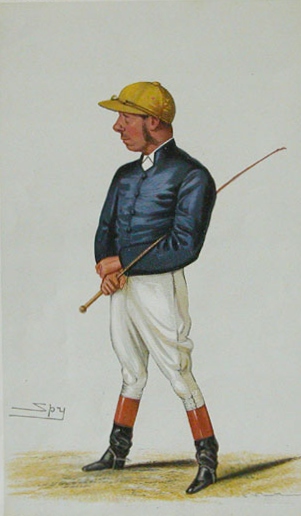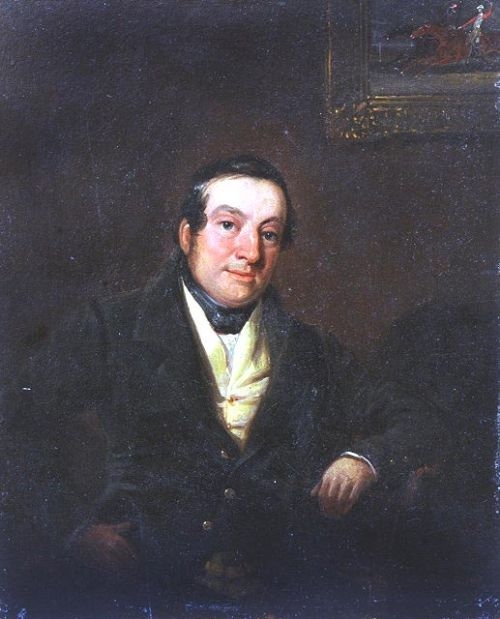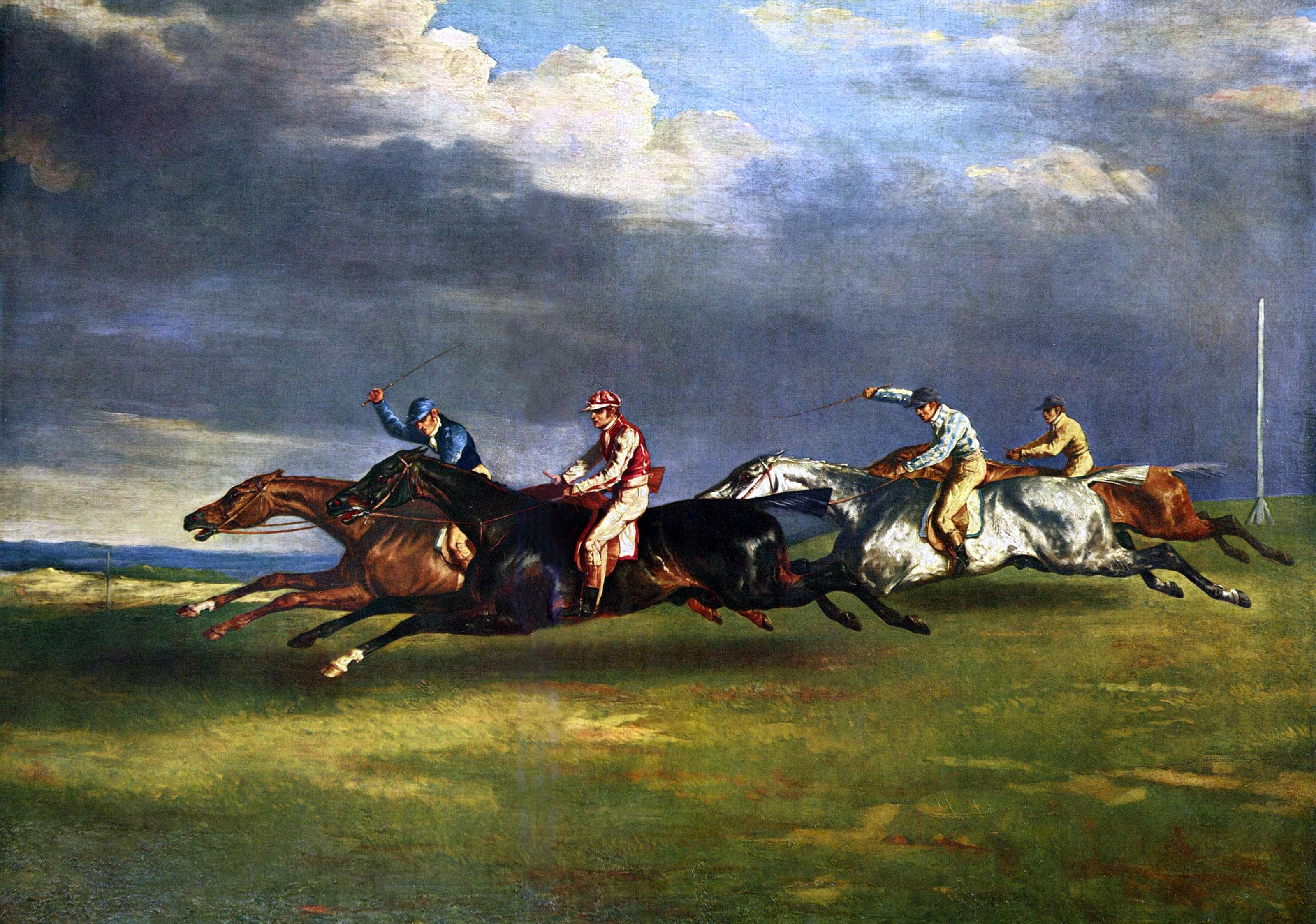|
Formosa (horse)
Formosa (1865–1881) was a British Thoroughbred racehorse that was the first winner of the English Fillies Triple Crown in addition to running a dead heat with the colt Moslem for the 2,000 Guineas Stakes. Formosa was bred by James Cookson and was foaled in 1865 at his Neasham Hall stud farm. Formosa was sold to William Graham (who raced under the pseudonym G. Jones) in 1866 and raced her entire three-year racing career under his ownership. After her racing career ended in 1871, she became a broodmare for Graham until his death in 1876. Formosa was exported to France in 1879 and died there in February 1881. While she did not produce offspring that excelled at racing, her daughters that were exported to Germany and New Zealand did produce descendants that were successful racers. Background Formosa was foaled in 1865 in Neasham at the farm of her breeder James Cookson. Her sire, Buccaneer, was considered to "be the best horse of his year", winning the Mottisford Stakes as a two- ... [...More Info...] [...Related Items...] OR: [Wikipedia] [Google] [Baidu] |
Harry Hall (painter)
Harry Hall (c. 1814 – 22 April 1882) was an English equestrian painter, whose works were in demand by horse owners. His output was prolific and he was the foremost racehorse portraitist of his time: his style has been described as being "strikingly modern... when compared with many of his contemporaries". He also produced other types of portraits and shooting scenes. Career Hall was born in Cambridge sometime around the middle of the second decade of the 19th century (dates of 1813, 1814, 1815, and 1816 are to be found in biographies). He first appeared as an artist at Tattersalls, working on a number of their publications; initially ''British Racehorses'' and ''The Sporting Review''. He graduated to become chief artist of '' The Field''. He produced a great volume of work, much of which was engraved. ''The Sporting Magazine'' published 114 plates by Hall. He also worked for ''The Illustrated London News''. Hall began life as a portrait painter, and exhibited at the Royal A ... [...More Info...] [...Related Items...] OR: [Wikipedia] [Google] [Baidu] |
Wrestler
Wrestling is a series of combat sports involving grappling-type techniques such as clinch fighting, throws and takedowns, joint locks, pins and other grappling holds. Wrestling techniques have been incorporated into martial arts, combat sports and military systems. The sport can either be genuinely competitive or sportive entertainment (see professional wrestling). Wrestling comes in different forms such as freestyle, Greco-Roman, judo, sambo, folkstyle, catch, submission, sumo, pehlwani, shuai jiao and others. A wrestling bout is a physical competition, between two (sometimes more) competitors or sparring partners, who attempt to gain and maintain a superior position. There are a wide range of styles with varying rules, with both traditional historic and modern styles. The term ''wrestling'' is attested in late Old English, as ''wræstlunge'' (glossing ''palestram''). History Wrestling represents one of the oldest forms of combat. The origins of wrestling go ... [...More Info...] [...Related Items...] OR: [Wikipedia] [Google] [Baidu] |
Epsom Derby
The Derby Stakes, also known as the Epsom Derby or the Derby, and as the Cazoo Derby for sponsorship reasons, is a Group 1 flat horse race in England open to three-year-old colts and fillies. It is run at Epsom Downs Racecourse in Surrey on the first Saturday of June each year, over a distance of one mile, four furlongs and 6 yards (2,420 metres). It was first run in 1780. It is Britain's richest flat horse race, and the most prestigious of the five Classics. It is sometimes referred to as the "Blue Riband" of the turf. The race serves as the middle leg of the historically significant Triple Crown of British horse racing, preceded by the 2000 Guineas and followed by the St Leger, although the feat of winning all three is rarely attempted in the modern era due to changing priorities in racing and breeding, and the demands it places on horses. The name "Derby" (deriving from the sponsorship of the Earl of Derby) has been borrowed many times, notably by the Kentucky D ... [...More Info...] [...Related Items...] OR: [Wikipedia] [Google] [Baidu] |
Lincolnshire Handicap
Lincolnshire (abbreviated Lincs.) is a county in the East Midlands of England, with a long coastline on the North Sea to the east. It borders Norfolk to the south-east, Cambridgeshire to the south, Rutland to the south-west, Leicestershire and Nottinghamshire to the west, South Yorkshire to the north-west, and the East Riding of Yorkshire to the north. It also borders Northamptonshire in the south for just , England's shortest county boundary. The county town is Lincoln, where the county council is also based. The ceremonial county of Lincolnshire consists of the non-metropolitan county of Lincolnshire and the area covered by the unitary authorities of North Lincolnshire and North East Lincolnshire. Part of the ceremonial county is in the Yorkshire and the Humber region of England, and most is in the East Midlands region. The county is the second-largest of the English ceremonial counties and one that is predominantly agricultural in land use. The county is fourth-largest of ... [...More Info...] [...Related Items...] OR: [Wikipedia] [Google] [Baidu] |
Chester Cup
The Chester Cup is a flat handicap horse race in Great Britain open to horses aged four years or older. It is run over a distance of 2 miles, 2 furlongs and 147 yards () at Chester in May. History The event was established in 1824, and it was originally called the Tradesmen's Cup. It was initially a limited handicap with a minimum weight of . For a period the race was known as the Tradesmen's Plate. During this time it was open to horses aged three or older. The race was renamed the Chester Trades' Cup in 1874. From this point it was often referred to as the Chester Cup, and that became its usual title in 1884. The Chester Cup was formerly contested over 2 miles, 2 furlongs and 77 yards. It was abandoned in 1969, and extended by 20 yards in 1970. The distance of the race was changed to 2 miles, 2 furlongs and 117 yards in 1992. It was increased to its present length in 1994. Reco ... [...More Info...] [...Related Items...] OR: [Wikipedia] [Google] [Baidu] |
Prince Of Wales's Stakes
The Prince of Wales's Stakes is a Group 1 flat horse race in Great Britain open to horses aged four years or older. It is run at Ascot over a distance of 1 mile 1 furlong and 212 yards (2,004 metres), and it is scheduled to take place each year in June. History The event was established in 1862, and it was named after the Prince of Wales at that time, the future King Edward VII. The original version was restricted to three-year-olds, and it was contested over 1 mile and 5 furlongs. The race was discontinued after World War II, when there was no Prince of Wales. It returned in 1968, a year before the investiture of Prince Charles. The distance of the new version was 1 mile and 2 furlongs, and it was now open to horses aged three or older. The present system of race grading was introduced in 1971, and for a period the Prince of Wales's Stakes was classed at Group 2 level. It was promoted to Group 1 status in 2000, and at this poi ... [...More Info...] [...Related Items...] OR: [Wikipedia] [Google] [Baidu] |
Walk-over
John_Carpenter_was_disqualified,_prompting_his_teammates_John_Taylor_(athlete).html" ;"title="John_Carpenter_(athlete).html" "title="Athletics at the 1908 Summer Olympics – Men's 400 metres">men's 400 metres running in a walkover. American John_Carpenter_was_disqualified,_prompting_his_teammates_John_Taylor_(athlete)">John_Baxter_Taylor_and_William_Robbins_(athlete).html" ;"title="John Carpenter (athlete)">John Carpenter was disqualified, prompting his teammates John_Baxter_Taylor_and_William_Robbins_(athlete)">William_Robbins_to_refuse_to_race_in_protest..html" ;"title="John Taylor (athlete)">John Baxter Taylor and William_Robbins_to_refuse_to_race_in_protest.">John_Taylor_(athlete)">John_Baxter_Taylor_and_William_Robbins_(athlete)">William_Robbins_to_refuse_to_race_in_protest. A_walkover,_also_W.O._or_w/o_(originally_two_words:_"walk_over")_is_awarded_to_the_opposing_team/player_etc,_if_there_are_no_other_players_available,_or_they_have_been_disqualified,_because_the ... [...More Info...] [...Related Items...] OR: [Wikipedia] [Google] [Baidu] |
George Fordham
George Fordham (1837–1887) was a British flat racing jockey. He was Champion Jockey every year between 1855 and 1863, as well as four other occasions in his own right and once as joint champion. He then won the Derby in 1879, won the Oaks five times, and the Grand Prix de Paris three times. His career high was 165 wins in 1862. He was described in 1910 as "one of the greatest jockeys of all-time". Background Fordham was born in Newmarket, the son of James Fordham in Cambridge on 24 September 1837. His uncle was travelling head lad to Richard Drewitt in Middleham, North Yorkshire and it was here he became an apprentice. He was trained by Drewitt and Edward Smith, and at the age of thirteen had his first ride at Brighton after Drewitt moved to Lewes, Sussex. Riding career George's first mount may have been on Cora yrs 5st 1lbat Epsom adly away and unplacedon Tuesday 5 November 1850 for Mr Douglas. In October 1851 he gained his first victory in the Trial Stakes at th ... [...More Info...] [...Related Items...] OR: [Wikipedia] [Google] [Baidu] |
Newmarket Racecourse
Newmarket Racecourse is a British Thoroughbred horse racing venue in Newmarket, Suffolk, Newmarket, Suffolk, comprising two individual racecourses: the Rowley Mile and the July Course. Newmarket is often referred to as the headquarters of Horse racing in the United Kingdom, British horseracing and is home to the largest cluster of training yards in the country and many key horse racing organisations, including Tattersalls, the National Horseracing Museum and the National Stud. Newmarket hosts two of the country's five British Classic Races, Classic Races – the 1,000 Guineas and 2,000 Guineas, and numerous other Group races. In total, it hosts 9 of British racing's List of British flat horse races#Group 1, 36 annual Group One, Group 1 races. History Racing in Newmarket was recorded in the time of James VI and I, James I. The racecourse itself was founded in 1636. Around 1665, Charles II of England, Charles II inaugurated the Newmarket Town Plate and in 1671 became the fi ... [...More Info...] [...Related Items...] OR: [Wikipedia] [Google] [Baidu] |
George Fordham Vanity Fair 2 September 1882
George may refer to: People * George (given name) * George (surname) * George (singer), American-Canadian singer George Nozuka, known by the mononym George * George Washington, First President of the United States * George W. Bush, 43rd President of the United States * George H. W. Bush, 41st President of the United States * George V, King of Great Britain, Ireland, the British Dominions and Emperor of India from 1910-1936 * George VI, King of Great Britain, Ireland, the British Dominions and Emperor of India from 1936-1952 * Prince George of Wales * George Papagheorghe also known as Jorge / GEØRGE * George, stage name of Giorgio Moroder * George Harrison, an English musician and singer-songwriter Places South Africa * George, Western Cape ** George Airport United States * George, Iowa * George, Missouri * George, Washington * George County, Mississippi * George Air Force Base, a former U.S. Air Force base located in California Characters * George (Peppa Pig), a 2-year-old pig ... [...More Info...] [...Related Items...] OR: [Wikipedia] [Google] [Baidu] |
Middle Park Plate
The Middle Park Stakes is a Group 1 flat horse race in Great Britain open to two-year-old colts. It is run on the Rowley Mile at Newmarket over a distance of 6 furlongs (1,207 metres), and it is scheduled to take place each year in September. History The event was founded by William Blenkiron, and it is named after his stud at Eltham. It was established in 1866, and was initially titled the Middle Park Plate. It was originally open to horses of either gender. The race was formerly staged during Newmarket's Cambridgeshire Meeting in late September or early October. It was restricted to colts in 1987. It became part of a new fixture called Future Champions Day in 2011. From 2015, the Middle Park Stakes was moved from Future Champions Day and brought forward two weeks, returning to the Cambridgeshire meeting, to avoid a clash with the similar Dewhurst Stakes. The Middle Park Stakes was added to the Breeders' Cup Challenge series in ... [...More Info...] [...Related Items...] OR: [Wikipedia] [Google] [Baidu] |



